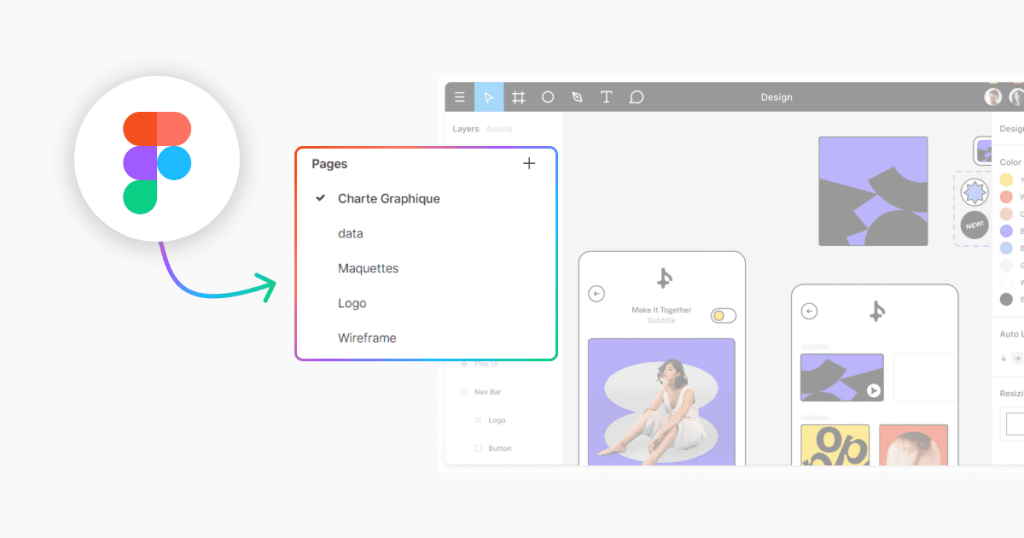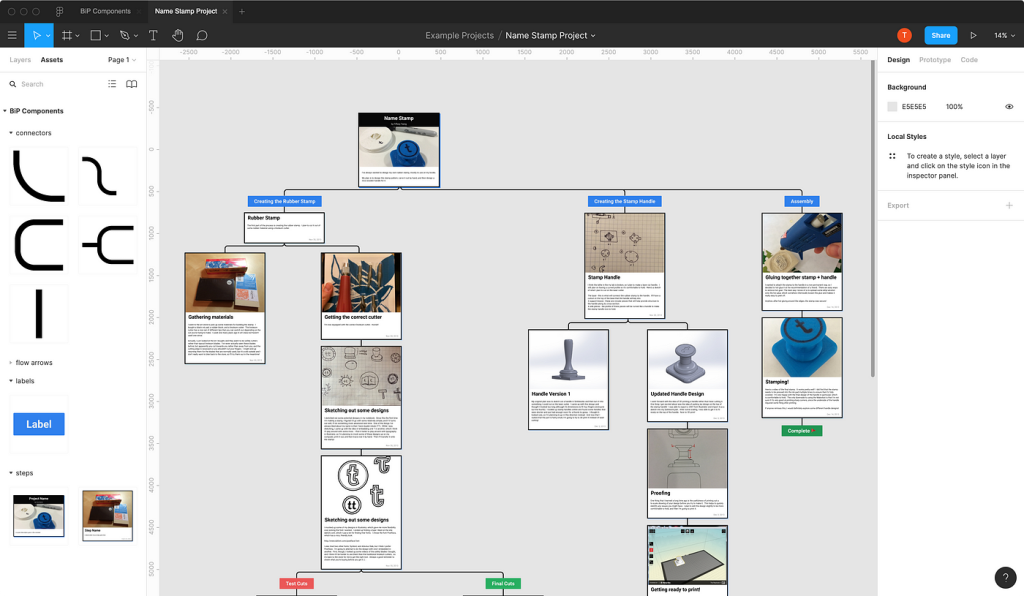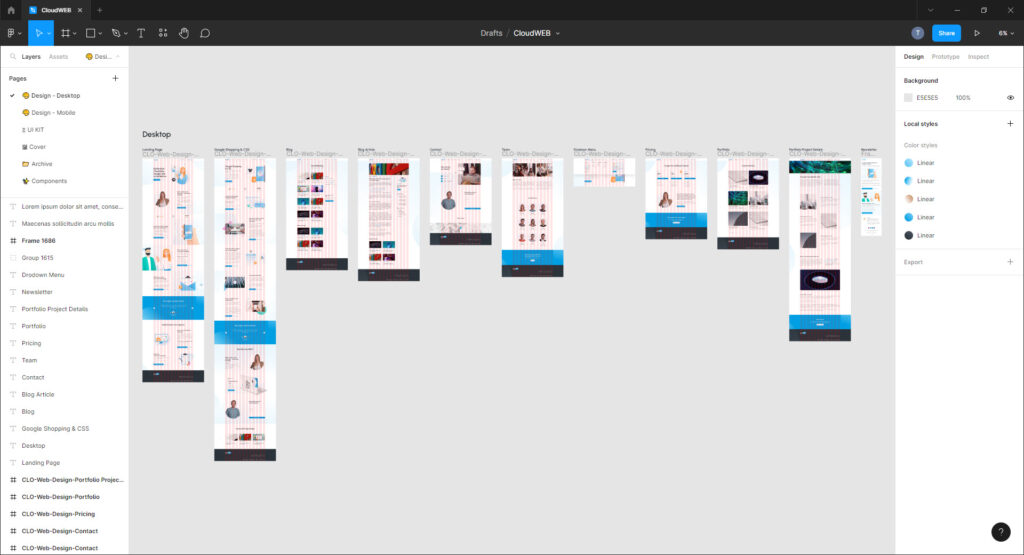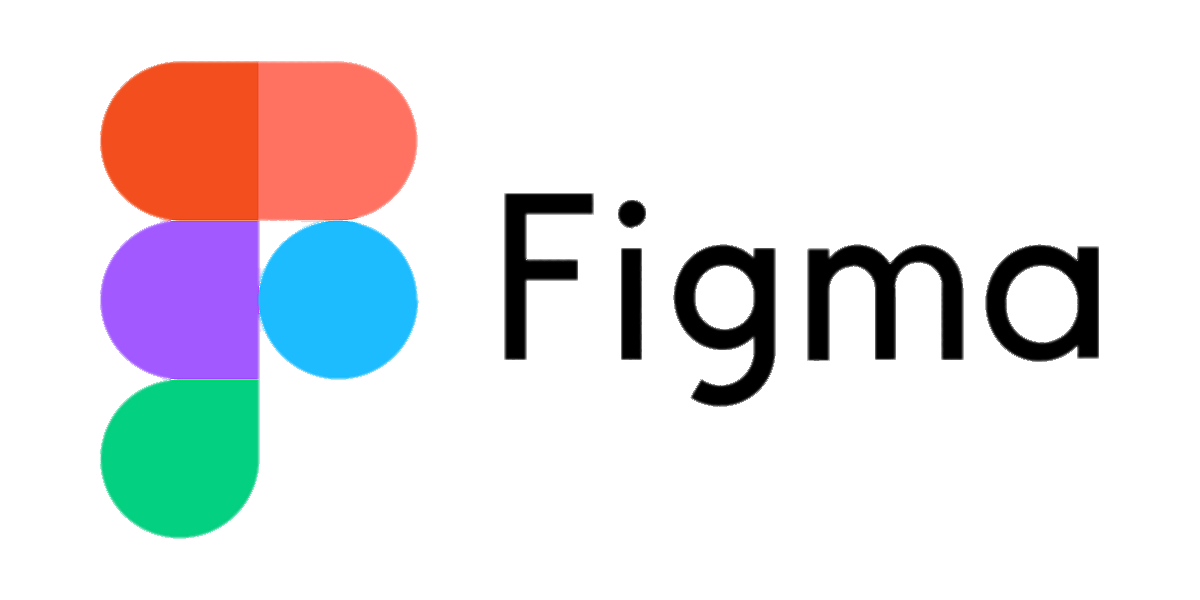In the ever-evolving landscape of design, effective collaboration is paramount, and Figma stands out as a pioneer among tools that have reshaped the way designers collaborate. In this comprehensive review, we delve into Figma, a cloud-based design platform renowned for its intuitive interface, real-time collaboration capabilities, and its ability to streamline the design process.

Key Features:
- Real-Time Collaboration: Figma’s defining feature is its real-time collaboration capability, which allows multiple team members to work on a design project concurrently, with changes instantly visible. This fosters seamless communication and eliminates the need for constant file sharing.
- Web-Based Design: Figma operates entirely within a web browser, making it accessible from any device with an internet connection. This approach offers flexibility in design work, enabling designers to work from virtually anywhere and at any time.
- Interactive Prototyping: Figma empowers designers to create interactive prototypes effortlessly. It enables the addition of clickable elements, transitions, and animations to designs, providing a dynamic preview of the user experience.
- Component-Based Design: Figma advocates for a component-based design approach. Designers can create reusable components and styles, ensuring design consistency across projects and saving valuable time.
- Version Control: Figma meticulously tracks design file versions, facilitating change tracking, reverting to prior versions, and supporting effective collaboration.
- Plugins and Integrations: Figma boasts robust plugin support and seamless integration with various other design and project management tools, enhancing its functionality and adaptability.

Advantages:
- Seamless Collaboration: Figma’s real-time collaboration is a game-changer for design teams. It promotes improved communication, faster iterations, and efficient teamwork, regardless of geographical distances.
- Design Accessibility: Thanks to its web-based nature. Figma ensures that designers can access their work from anywhere and on a multitude of devices. This adaptability is particularly essential in remote work scenarios.
- Streamlined Workflow: Component-based design and interactive prototyping simplify the design process. Designers can create consistent interfaces and test user interactions with ease.
- Cost-Effective: Figma’s cloud-based model eliminates the need for substantial investments in hardware and software. This cost-effective approach is particularly beneficial for startups and small design teams.
- Thriving Community and Resources: Figma boasts a vibrant user community and provides a wealth of tutorials and resources, facilitating the learning and growth of designers’ skills.

In conclusion, Figma has fundamentally reshaped the realm of design collaboration and creation. Its real-time collaboration capabilities, accessibility, and feature-rich design tools have solidified its position as the preferred choice for professionals and design teams worldwide. Whether you are an experienced designer or just beginning your journey, Figma’s user-friendly interface and extensive capabilities are poised to help you bring your design visions to life.
